10 To Try: Women Made Wines From Around the World
By Gwendolyn Alley
Do you know why there are so many famous widows in history— like Veuve Clicquot, Camille Roederer, and Madame Bollinger-–making wine or owning wineries in Champagne?
No it’s not because research shows that women are more sensitive to scents or have a more critical palate.
While in the past, when men went to war, the women stayed behind and were allowed to make the wine, they weren’t allowed to own property, including wineries, unless they were widowed!
Now of course women don’t have those limitations. Yet Karen McNeil reports that in 2018 when she asked trade associations from California, Washington, and New York for an estimate on the percentage of female winemakers in their states, she learned that only “10 percent of winemakers in California are female, compared to 7 percent in Washington, and 5 percent in New York.”
This is surprising when 42% of Enology graduates at UC Davis are women, says McNeil, and the New York Times in 1985 said that women would be making one third of all wine by the 1990s.
Beyond the famous widows of Champagne, there are women worldwide involved with the wine industry. Instead of taking over as widows, more and more women are taking over the reins from their dads– and sometimes moms!
BONUS RESOURCE: Amy Bess Cook’s Woman Owned Wineries reports that with over 4200 wineries in California, 14% have a woman as a lead winemaker. The Woman Owned Winery website offers a searchable directory of wineries in the US.
Here are a few notable women of the world in wine– plus a few of their wines.
Champagne, France
Growing up in a Champagne house like Bruno Paillard was mysterious and fun, and Alice Paillard loved it: “Going down to the wine cellar was like digging out treasures.” She learned “respect for the work of the wine, whoever made it, and nourished it.” Fifteen years ago, Alice joined the team, and in 2019, she took over management. While her father has technically retired, he still is around to guide her, and help her with the final blends: “I’m very privileged to pick up the phone. He’s not out of the game. He’s not the type to retire.” Her father’s experience is available to her. And working together? “It’s a pleasure.”
Champagne Bruno Paillard Extra Brut Blanc de Blancs Grand Cru ABV 12% alcohol SRP $80 Sample for review
Color: Platinum, perlage very delicate and fine, and persistent
Aroma: Subtle croissant, lemon puff pastry danish, chalky, chamomile
Palate: Light, refreshing, vibrant, delicate, lemon, minerals, long lingering lemon finish
Pairing: This wine goes well from the beginning of the meal to the end– ideal for a special evening!
BONUS RESOURCE: To learn more about Champagne, check out author Caroline Henry. In the introduction to her book, Terroir Champagne: the Luxury of Sustainable, Organic and Biodynamic Cuvees, Caroline explains what “terroir” means — beyond simply the place of origin– and why she focuses on how the people who make the wine interpret the expression of the soil. To truly express the soil, Caroline argues that the winemaker needs to facilitate bringing the minerals in the soil to the plant which requires that water “be able to freely move in the soil.”
Vouvray, Loire, France
Like Anne Paillard, Céline Champalou grew up in wine: her mother Catherine comes from 12 generations in the wne business and her father Didier comes from 6 generations. They started their own domaine in 1983 growing grapes organically and biodynamically. Following her university studies in enology, in 2006 Céline joined the domaine, and today makes the wines.
2020 Domaine Champalou Vouvray ABV: 13.5% Grapes: Chenin Blanc SRP $25 Importer: Kermit Lynch Wine Merchant Purchased at Point de Chene, Ojai, CA
Color: Yellow, almost daffodil Aroma: Meadow flowers, chamomile, green grass, wet stone, white nectarine
Palate: Zesty acidity, lots of citrus, lightly grassy, clean Eureka lemon finish
Pairing: Great wine for a seafood meal from start to finish.
Bordeaux, France
Claire Villars-Lurton of Château Haut-Bages Libéral is the "happy owner of two chateaus... my grandfather was a visionary who bought these estates." And while it is challenging, wines are made without sulfites and they are certified biodynamic by Demeter. On two blocks of vineyards, she's planted 90 trees per hectare: "the trees and the plants to create beautiful biodiversity" along with carbon sequestration. "The trees are best for creating water, humous, biodiversity," she says seeing the necessity of planting vines with trees. "My way of thinking is to come back with the truth." She finds the vines suffer less when planted with the trees.
2020 Château Haut-Bages Libéral Cérès ABV 12.5% SRP $25 Grapes: 72% Cabernet Sauvignon, 28% Merlot Region/AOC: Pauillac Importer: Millésima USA Color: Medium density, vibrant color, very youthful, ruby rose with a vibrant
Nose: Very pretty nose of rose petals, sandalwood, amber, cherry, plum, vanilla bean.
Palate: Tart cherry, tannins, acidity, minerals, fresh and clean, with a finish of cocoa nibs and coffee beans.
Pairing: Camembert, blue cheese, braised meats.
Alentejo, Portugal
Sandra Alves serves as Director of Winemaking at Herdade do Esporão where, since 2020, she oversees the production of 30 wines made from fruit grown on 1,236 acres of vineyards. While Sandra grew up with her grandfather making wine from backyard grapes, she earned undergraduate and graduate degrees in Oenology. It is to Sandra’s credit that Herdade do Esporão obtained organic certification in viticulture to become the largest certified organic vineyard in Portugal and one of the 10 largest in the world. This move has increased the quality of the grapes, she says.
2020 Esporao Colheita White wine, Alentejo
Certified Organic ABV 13.5% SRP $18 Grapes: Antão Vaz 30%, Viosinho 30%, Alvarino 30% (Albarino in Spain) Importer: Now Wine Imports Sample for review
Color: Pale, golden, very clear and translucent.
Aroma: Green, meadow, fresh meadow grasses and flowers
Palate: Fresh citrus front to mid palate very tart with a tropical fruit finish, salinity with bright acidity.
Pairing: The salinity in the wine is such a perfect match for fresh seafood. Fantastic with traditional pork loin and clams.
Mendoza, Argentina
“Vines –like humans –prefer cooler nights for better sleep and a nice warm sunny day,” says Anne Bousquet. They shut down when it is too hot or too cold. Anne should know; she grew up in the business, first in Southwest France where her father had a third generation winery and vineyards –until he sold it all and set up shop in the Uco Valley of Argentina’s Mendoza region in the 1990s when no one believed wine grapes could thrive in such a cold, hostile, high altitude place. But he proved them wrong. From the beginning, all of Domaine Bousquet wines have been made 100% with organically grown grapes. Under Anne’s guidance, soon they will be one of the largest organic wineries in the world, producing 1.5 million cases sustainably and ethically produced as evidenced by their pursuit of B Corp certification and biodynamic certification.
Domaine Bousquet Gran Malbec 2018
ABV 14.8% SRP $25 Grapes: 85% Malbec, 5% Cabernet Sauvignon, 5% Merlot, 5% Syrah.
Color: Very purple, plum, ruby rim, cloudy density
Aroma: Lots of black and blue fruit, red fruit, very fruity on the nose, mint, sage, chaparral.
Palate: Grippy tannins, blue fruit, great character and complexity.
Pairing: Cheeses, dandelion greens, beef stew with mashed potatoes.
Santa Barbara, California, United States
“We’re trying to find other vineyards off the beaten path but with similar values we have with respect for the land and the farming part of it,” says Tara Gomez owner and winemaker at Camins 2 Dreams.. Camins means path in Catalan, Mireia’s native language, and Camins 2 Dream is “the path to our dreams making wine together,” Mireia says.With a degree in Enology, Tara Gomez, who is Chumash, was working as a winemaker in central California when she met intern Mireia Taribó, who is Spanish. They visited each other’s countries, traveled to taste wine, and helped with each other’s projects. In 2014, they married, and Mireia joined Tara in Lompoc on the road (camino) to their dreams. With a focus on the Sta Rita Hills AVA, they purchase grapes that use organic and biodynamic practices preferring lesser known “underdog” varietals like gruner veltliner and graciano in addition to grenache and syrah.
Santa Barbara County Christy and Wise Vineyard Grenache 2020
Located just outside the Sta Rita Hills AVA, the Demeter certified Christy and Wise Vineyard is cool and breezy which brings out zippy yet ripe raspberry with black pepper on the finish.
Lodi, California
To acquiesce is to agree, go along; corporate executive Rodney Tipton was listening to k.d.lang‘s song “Acquiesce” when he knew he and wife Sue would own a winery with that name. After raising three sons and living abroad, they found their vineyard in Lodi; when they decided to make wine, Sue became a winemaker, and “surrender to the grapes.” In a region known for red wine, Lodi’s Acquiesce grows obscure white Rhone varietals. After tasting a white wine blend from Chateau Beaucastel, they decided to plant Grenache Blanc in 2008. Pleased with results, they added Roussanne, Viognier and Picpoul Blanc with cuttings from Tablas Creek Winery in Paso Robles which partners with Beaucastel where these varietals originated. Grapes are hand picked, whole cluster pressed, and fermented with yeast indigenous to the Rhone. Sue started Slow Food Lodi; making balanced wine that pairs well with food matters to her.
2020 Acquiesce Grenache Blanc Lodi ABV 12%
Color: So very pale, white gold, platinum, barely yellow in color
Aroma: Nice light florals, white flowers, very subtle,
Palate: Lots of acidity, apricot, very clean and dry, very enjoyable now but would do well with age.
Pairing: Very food friendly! Try it with seafood or Greek dishes like avgolemono lemon chicken soup.
Wrattonbully, South Australia
Two sisters run the show at Eight at the Gate: Jane Richards is the sister who operates the business side of the operation and Clare Davies runs the cellar. “Two sisters working together is certainly a different dynamic than working with your usual work colleague,” says Jane. “I think for Claire and I it works really well though. We work quite independently, staying in our lanes mostly, and then make joint decisions on the larger more strategic issues. Being raised the same way we have the same philosophy around how to combine family and work responsibilities. I think for Claire and I the skill sets that we have are very complimentary. Claire is the trained viticulturist and Winemaker so she handles all things grapes and vineyard.”
2016 Eight at the Gate Family Selection Shiraz Single Vineyard ABV 14.5% SRP $40
Color: Dark and dense, garnet with a brickish rim.
Aroma: Bramble fruit, blackberry, blue berry, cedar, musk, savory with fruit, wet soil,
Palate: Very pure, quite dry, blueberry bramble berry finish with wild blueberry lingering, Christmas pine.
Pairing: Meat pies in mushy peas are traditional Adelaide fare and perfect together, and the wine also goes well with the Italian meatballs in pasta sauce.
Tuscany, Italy
As an Italian studying business in California, many years ago Antonella Manuli learned about the organic movement. Back in Italy, she worked in accounting and finance then ran the Terme di Saturnia Spa Resort until she found the land for the Fattoria La Maliosa organic farm where she could produce natural wines, extra virgin olive oil, and honey. From a state of near-abandonment, Antonella revived a 50-year-old vineyard on a site which is one of the oldest places in the world for wine grape cultivation, going back 4,000 years. With the agronomist and researcher Lorenzo Corino, they developed the “Metodo Corino.” On her 160 hectare farm in the Maremman Hills in southwestern Tuscany, Fattoria La Maliosa's owner Antonella Manuli makes natural wine using indigenous grapes that have been certified organic and biodynamic since 2010.
2019 La Maliosa Saturnia Bianco ABV 12% SRP $30 Grapes: 50% Procanico, 50% Trebbiano Sample for review
Color: Very deep orange or amber without the brown.
Aroma: Smells lovely, original, different, florals, orange spice tea, dried orange and clove.
Palate: Very dry and tannic due to the skin contact. Clean and fresh, clean fresh herbs on the finish leaving the palate clean and refreshed.
Pairing: Excellent food wine from salads to seared ahi tuna.
Friuli, Italy
Vigna Petrussa, says renowned Italian wine expert Ian D’Agata is “one of Italy’s best and most under the radar estates.” Praising the producer’s winemaker-vigneron Hilde Petrussa for a “great passion for her craft” he gave all of her wines 90+ point ratings in a January 2020 article in Vinous. Vigna Petrussa also is featured in the Slow Wine Guide Italy Edition. Hilde took over for her mother as head woman winemaker-vigneron in 1995, but Hilde wanted to focus on indigenous grapes and high quality-- and so she has, making a name for herself in the Friuli Venezia Giulia region of northeast Italy and beyond.
2018 Vigna Petrussa “Richenza,” Friuli ABV: 14% Grapes: blend of friulano, picolit, riesling renano, Malvasia SRP $32 Imported by VeroVino Sample for my review
Color: Golden yellow, daffodil, buttercup
Aroma: Marmalade, tuberose, minerals, mulling spice with orange rind, thyme, lemon thyme.
Palate: Clean, bright, acidic, herbal, lemon, green olives, lemon peel, sea salt, very long lingering finish, rose petals.
Pairing: Shrimp bisque, crab cakes with aioli, asparagus brie tart, berry galette.
BONUS RESOURCE: Both of these Italian producers are imported to the United States by Sheila Donahue’s company VeroVinoGusto. Based in Ventura, California and Bologna, Italy, Sheila specializes in small, family-owned, estate wines made naturally, sustainably, and organically. “My business focuses on wines that are out of the ordinary,” she says.
Next month:
10 to Try for Earth Month: Natural, Organic, Biodynamic Wines
Gwendolyn Alley writes about California and Southern Oregon for Slow Wine Guide as well as freelance for various online and print publications. Her blog Wine Predator focuses on sustainability and food/wine pairings. She loves outdoor adventures and travel.
Get Lit with Bong Vodka
Missing your college days? Want to let your inner millennial out for a night? Bong Spirit Vodka is the way to go.
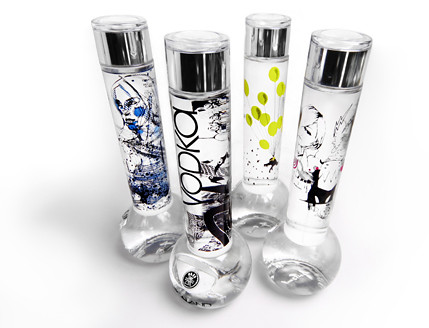
Copyright 2006 by Aaron Tang, licensed under CC by 2.0
Bong Spirit Vodka is about youthful energy, from its playful packaging to its Instagram. This is a product made specifically with the millennial generation in mind. Its eye-catching and over-the-top design stands out from its more staid and traditional shelf-mates in the liquor store. This is a statement piece, one to put out on the table at parties to get people talking.
But while Bong Vodka makes a great conversation-starter, it's not all flash. There's real substance under its drug-culture exterior.
Bong Spirit Vodka has won a few awards over the years, which proves that it should be taken seriously. It won Platinum Best in Show at the SIP Awards International Spirits Competition, The Gold Award (91 points) at the International Review of Spirits Awards, and First Place at the 22nd Annual Beverage Dynamics.
This vodka is distilled six times through a dual distillation process. Next, it's filtered four times through a sheet, candle, and charcoal process. This is all using a 175 year old recipe passed down through five generations of distillers from Holland. This pedigree combined with its clear reference to drug culture reflects the blending of tradition and youthful change found throughout the Netherlands and Europe as a whole.
Cities like Amsterdam are an eclectic mixture of old and new architecture and culture. The oldest building in Amsterdam was consecrated in the early fourteenth century, and yet it exists today in a city also dotted with skyscrapers and modern office buildings. The city itself has a rich history that has spanned 800 years. When people think of today's Amsterdam though, they are more likely to think of the carefree spirit that comes hand in hand with a thriving tourist industry supported in part by legalized marijuana.
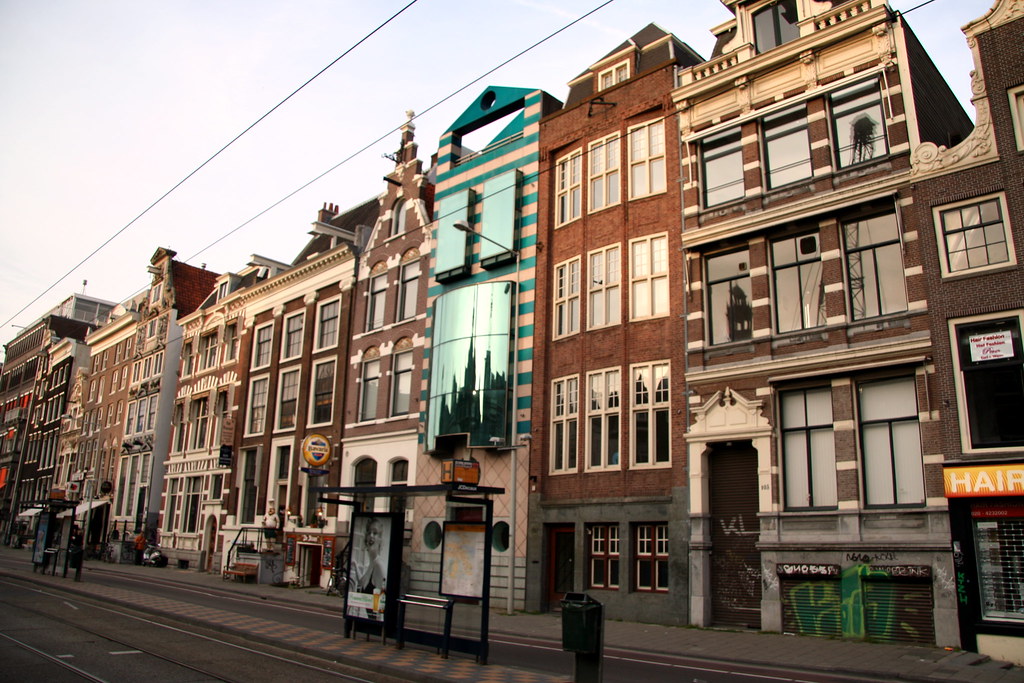
Copyright 2005 by Ricardo Liberato, licensed under CC by 2.0
Bong vodka fully embraces the millennial spirit. The website says "Today’s Millennial vodka drinker is looking to challenge the status quo. Bong Vodka is for those who are not afraid to challenge authority." This youthful anti-authoritarianism makes it a standout liquor brand. It's brash and overt. So what if it isn't elegant or reserved? So what if it references drug culture and parties?
Alcohol is an integral part of social life, particularly for young people who want escape the stressful atmosphere of college or entry-level jobs. This is the perfect answer to that millennial desire for escapism: a liquor that is good quality without taking itself too seriously.
Plus it'll really step up your social media game.
You can buy some here: Bong Spirit Vodka
Weller 12 Year: Gone Without a (Buffalo) Trace
A bottle of W.L. Weller 12 Year Bourbon is like tickets for Hamilton on Broadway: hard to find but well worth the wait.

Copyright 2015 by Peter Anderson, licensed under CC by 2.0
Weller 12 year has skyrocketed in both popularity and price in recent times. From the numerous awards it has won over the years, that's not entirely surprising. But Weller 12's popularity is also part of a larger trend in liquor which is affecting whisk(e)y sales around the world. We are in the middle of what Fortune calls "The Billion-Dollar Bourbon Boom." From 2009 to 2014, bourbon sales increased at an unexpected rate of 6.75% per year - three times the sales increase from 2002 to 2007. Now, in 2016, bourbon remains a trendy purchase for millenials. Everyone wants to get their hands on a bottle of quality bourbon, and Weller 12 is an excellent bet.
From the rich amber hue to the elegant bottle, Weller 12 stands out on a shelf with an air of understated grace. This wheated bourbon (meaning its mash bill contains wheat instead of rye) has a soft yet bold flavor. Pop it open to experience what Buffalo Trace Distillery calls "aromas of lanolin, almond, creamed corn and toasty vanilla."
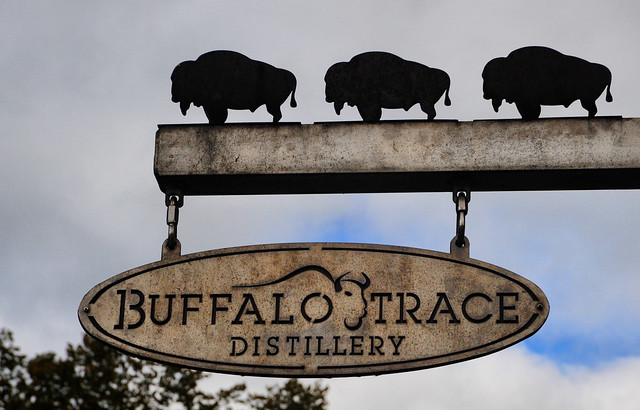
Copyright 2009 by Carl Wycoff, licensed under CC by 2.0
Buffalo Trace is about as all-American as you can get. Benjamin Harrison Blanton started distilling whiskey on the site in 1811, when Kentucky was still new to the union. Over the course of a century and some change, the distillery changed owners and names many times. It endured a fire, flooding, and prohibition, during which the distillery was allowed to remain open to produce "medicinal whiskey." It was rechristened "Buffalo Trace" in 1999 for the local railway line that had followed the tracks of migrating bison centuries prior. The distillery continually produces great products, from the eponymous Buffalo Trace Bourbon to the coveted classic: Pappy Van Winkle. Weller 12 is a strong part of Buffalo Trace's team of bourbons, and one that should satisfy the palates of both connoisseurs and casual liquor enthusiasts.
So now you're convinced: you need to try this bourbon. The only problem is that you've never seen it in a store before. Weller 12 is so hard to come by because Buffalo Trace only puts out a limited number each year. What's more, the current batch of bourbon was placed in barrels 12 years ago - well before the recent Bourbon Boom piqued the interest of so many people. Weller 12 is aged far longer than other wheated bourbons and the distillery puts a lot more care into the overall quality of its product, rather than the quantity they put out every year. This attention shows - many people compare it to Pappy Van Winkle, the even more elusive Buffalo Trace bourbon with a cult-like following. So while Weller 12 might be somewhat scarce right now, it is certainly worth the wait.
You have a few options to track down a bottle of Weller 12:
1. Check online retailers.
Since only a few Weller 12's are released every year (though that number is slowly increasing according to the AMA Buffalo trace did on Reddit), you may have to do some searching to find a retailer that has it in stock. However, some stores offer a chance to click and join the waiting list, which will alert you when the product comes back in stock.
2. Live in Texas (No, really)
According to Reddit user /u/cookmundo, "W.L. Weller has always been a steady seller in Texas. The Weller 12 was sometimes out of stock, but it could always be found in small, out-of-the-way liquor stores.
The main reason it doesn’t sell even more is that the predominant taste in many parts of the state, for reasons that aren’t clear to me, is Canadian Crown Royal." So for all you Texans who want to pick up a bottle of Weller - you're in luck! For those of you who don't live in the Lone Star state, you're better off searching for a bottle online.
The Lucas Winery
If you were intimately involved in Opus One, took all that knowledge you learned from both the French and American sides of that endeavor, and then started your own winery using that knowledge but focused on Zinfandel, you would have The Lucas Winery.
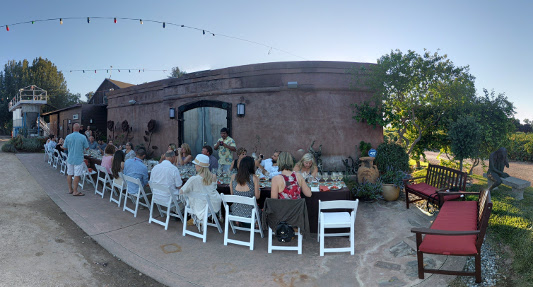
Lucas is a beautiful family winery in Lodi. The vines were planted right after prohibition, and they pick the Zinfandel on the early side to make it more food friendly. It's aged in French oak for fourteen to sixteen months before bottling. Part of the vineyard has been organic since 2009.
They make more than just classic Zinfandel. A standout for me was the Lucas 2015 Zin Blossoms, a very sophisticated and dry Rose Zinfandel with a great finish.
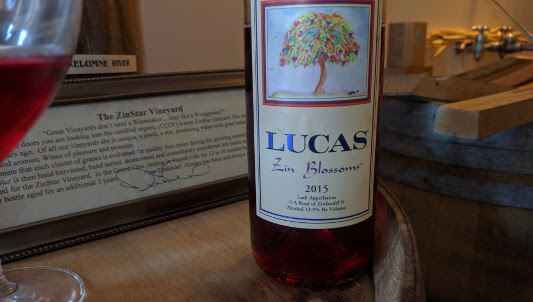
The winemaker, Heather Pyle-Lucas has another vineyard called Tangles where she does everything herself from growing the grapes to making the wine.
Unfortunately she never quite put the energy she needed to in the part she liked least, the sales and marketing. I guess there's something about taking the wine from restaurant to restaurant trying to make a sale that was unappealing to her.
I believe the last year Tangles was bottled was 2010. That seems a shame to me. Hopefully she'll make Tangles again soon.
The Wine Spectator Effect
2015 saw a lot of growth for 1000 Corks.
First we gained a lot more users. This meant we had to handle a lot more searches.
And there were many new wine and spirit stores that put up websites in 2015. Since we have to crawl them all, in order to be the most comprehensive search engine, that also meant a lot more load.
As a result we really began to outgrow our servers. When we had lots of users searching, our response times were definitely slower than we would have liked.
For example whenever I got a new Wine Spectator in the mail, I knew that the servers would be extra slow for a while, because all their readers would be busy searching for the wines that the editors' most liked that issue.
And don't even get me started on their Top 100 issue. I had to monitor everything very closely to maintain the performance we wanted as we were hit with a flood of searches.
So to solve this we went out and built a new server from scratch. We've named it baga1, after the Portuguese grape, baga.
The server is running our database, Postgresql. It's the third server we have in our colocation facility.

As for baga1 it features:
- A really cool low power Xeon D-1540 chip with eight real cores
- 10-Gigabit. This is our first 10-Gigabit computer, so it's still hooked into everything at gigabit speeds.
- 1.2TB Intel 750 SSD. This is the fastest non-enterprise SSD available. It's about five times faster than a normal SSD.
- 128 GB RAM. You can never have too much RAM. Our two other servers have a total of 48 GB of RAM, so it's really nice to have so much extra memory.
Hopefully this will carry us through the first half of 2016. Meanwhile we're already planning what new hardware to buy come Spring.
Photo credit: Craig Wyzik (Cropped from original - Creative Commons).
Terroir Champagne – Fact or Fiction
Caroline Henry for 1000 Corks
The word "terroir" has been creating waves in the wine wine world for the last few decades. While it was traditionally more associated with the old wine world, Europe, winemakers all over the world have been jumping on the bandwagon.
Even in Europe, some regions which originally were not very much terroir focused have been drawn to the concept. Why is this? I believe it is the perfect term to use when one is trying to distinguish oneself from others; it is also a term consumers have started to understand and look for when they want something more unique.
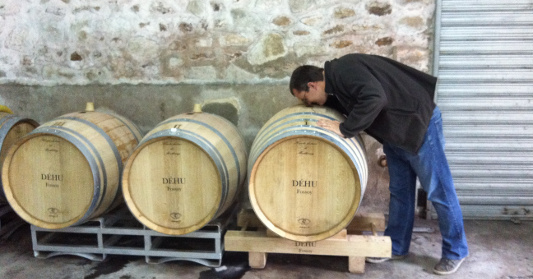
The original terroirists are the Burgundians – whose appellation system is completely terroir based, and who more recently are awaiting Unesco Heritage Protection for their Climats – the name they use to describe their terroirs.
Just north of Burgundy, the Champenois also applied for Unesco Protection for their terroir, even though the the notion of terroir is a lot less intrinsic in Champagne than it is in Burgundy.
So can we speak about Terroir in Champagne – and if yes till what extent?
There definitely exists a notion of terroir in Champagne, but this is in a more generic sense; it includes among other things the chalk subsoil, the continental climate, and the vineyard slopes.
But even if it is generally accepted that unique regional terroir is what made Champagne so famous, there is a general reluctance to talk about terroir on a more local or micro level. This is because the focus has always been on the blend and the savoir faire of the chef de cave.
Even the Grand Cru system is based on a village rather than vineyard/lieu dit level. This is because the average size of a champagne vineyard plot is 0,012 hectares. Yet it is also known that some vineyards or lie dits are more special than others, and the wines coming from these places are very expressive and unique.
One of the most famous examples, as well as being the first example of a single vineyard Champagne, is Philipponnat’s Clos des Goisses, which was first made in 1935.
It is a very steeply sloped south facing vineyard next to the canal in Mareuil-sur-Ay. The exposure alone makes it probably the most sun drenched place of the region, and it is one of the reasons Phillipponnat can make a single vineyard vintage Champagne year after year. This Champagne is also one of the most sought after by connoisseurs.
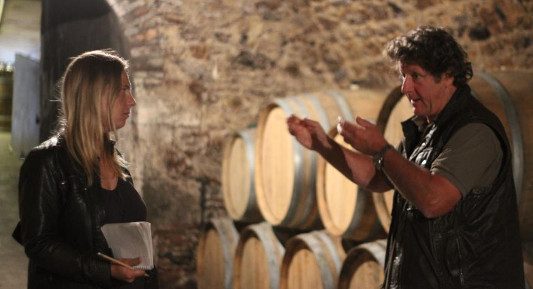
But does one have to choose between terroir and blend?
In fact no – the Clos des Goisses is a blend of two grape varieties, and several barrels, even if the origin is one actual place in one particular year.
Another expression of terroir champagne is a blend of several vintages of the same vineyard or lieu dits together. This will give the expression of a place over several years - the most famous examples here are probably the lieu dits by Anselme Selosse.
And of course there are Terroir Champagnes which are the expression of a vineyard, across different varieties and different years – like the Cuvee Louis by Champagne Tarlant for instance.
But blended or not, the general rule of thumb is that there are very few bottles of Terroir Champagne made. The first reason, which we already mentioned, is that the lieu dits or vineyards are quite small, which restricts the quantity.
The second and more important reason is that in order to make Terroir Champagne the soil in the vineyard needs to be alive. It is very difficult to give a unique expression of a polluted, dead place. While this may seem obvious, it is unfortunately quite exceptional in Champagne.
In the words of Isabelle Legeron, MW, "the region is one of the most polluted wine regions in the world". Since the business of Champagne is more focused on quantity than quality there also are very few incentives to farm more environmentally friendly. In general this way of farming means lower yields for more work.
And we have to remember that the bulk of the grapes are farmed by grape growers who are paid by the kilo and sell their crops to the Champagne Houses; they in turn will make quite standardized high volume Champagne out of them. Right here is yet another reason why there is so little focus on terroir Champagnes.
To recapitulate, Terroir Champagne does exist. In fact it is actually quite sought after, especially by more enlightened sommeliers, wine store owners and wine lovers with a preference for more natural wine.
And the fact that there is very little of it made adds to its desirability. That is why this type of Champagne is in fact the real luxury coming out of the region.
Let me elaborate – currently there are barely seventy certified organic producers, yet the region counts more than 15,000 winegrowers. Together with a few other producers who work in a real sustainable way, the total production of Terroir Champagne is somewhere between seven and ten million bottles a year, which is a fraction of Champagne’s total production of around 345 million bottles a year.
We can surmise that the total production of Terroir Champagne (when all producers are added) could be around the same as the total production of the prestige cuvee Dom Perignon. The biggest difference between the two remains the way the vineyard is farmed.
If we were to put this in regular or still wine terms one could argue that Terroir Champagne is the equivalent of natural wine – both are just as dividing, with people either passionately loving or hating them. But as with natural wine, more and more people are drawn to them.
About Caroline
Caroline Henry is the only English speaking journalist and wine writer based in Champagne. She regularly contributes to wine-searcher.com, Decanter, Palate Press and Snooth.
Over the last three years she has been specializing in the wines of Champagne. She teaches on the subject of sparkling wine in several wine programs in France and abroad and is also part of the research team of the Pole Champagne at the Reims Management School.
Caroline is a sommelier certified by the Court of Sommeliers in London as well as a wine location specialist on Champagne. Natural, organic and biodynamic wines are her great passions besides Champagne. She aims to publish the first book on environmentally friendly produced Champagne in September 2015.
To find out more about her book project please visit IndieGogo.